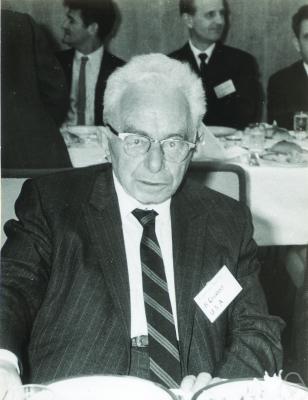- Richard Courant
Infobox Scientist
box_width = 300px
name = Richard Courant
image_size = 300px
caption =
birth_date =January 8 ,1888
birth_place = Lublinitz,Kingdom of Prussia
death_date =January 27 1972
death_place =
residence =
citizenship =
nationality =
ethnicity =
fields =Mathematician
workplaces =
alma_mater =
doctoral_advisor =
academic_advisors =
doctoral_students =William Feller
Martin Kruskal
notable_students =
known_for =
author_abbrev_bot =
author_abbrev_zoo =
influences =
influenced =
awards =
religion =
footnotes =Richard Courant (born
January 8 ,1888 –January 27 ,1972 ) was aGerman American mathematician .Life
Courant was born in Lublinitz in the
German Empire 's PrussianProvince of Silesia . During his youth, his parents had to move quite often, to Glatz, Breslau, and in 1905 toBerlin . He stayed in Breslau and entered the university there. As he found the courses not demanding enough, he continued his studies inZürich and Göttingen. Courant eventually becameDavid Hilbert 's assistant in Göttingen and obtained his doctorate there in 1910. He had to fight inWorld War I , but he was wounded and dismissed from the military service shortly after enlisting. After the war, in 1919, he married Nerina (Nina) Runge, a daughter of the Göttingen professor for Applied Mathematics,Carl Runge . He continued his research in Göttingen, with a two-year period as professor in Münster. There he founded the Mathematical Institute, which he headed as director from 1928 until 1933.Courant left Germany in 1933, earlier than many of his colleagues. While he was classified as a
Jew by theNazis , his having served as a front-line soldier exempted him from losing his position for this particular reason at the time; however, his public membership in the social-democratic left was a reason for dismissal to which no such exemption applied. [http://www-irma.u-strasbg.fr/~schappa/GoeNS.pdf]After one year in
Cambridge , Courant went toNew York City where he became a professor atNew York University in 1936. He was given the task of founding an institute for graduate studies in mathematics, a task which he carried out very successfully. TheCourant Institute of Mathematical Sciences (as it was renamed in 1964) continues to be one of the most respected research centers inapplied mathematics .Apart from his outstanding organizational talent, Courant is well remembered for his mathematical achievements. He authored the influential
textbook "Methods of Mathematical Physics ", which is still widely used more than eighty years after it was written. He was the co-author, withHerbert Robbins , of a popularization titled "What is Mathematics? ", which is still in print. His name is also attached to thefinite element method , later reinvented by engineers. Courant gave this a solid mathematical basis. This method is now one of the ways to solvepartial differential equation s numerically. Courant is a namesake of theCourant–Friedrichs–Lewy condition and theCourant minimax principle .Courant died in
New York City . The particle physicistErnest Courant is his son.Perspective on mathematics
Commenting upon his analysis of experimental results from in-laboratory soap film formations, Courant believed that the existence of a physical solution does not obviate the need for mathematical proof. Here is a quote from Courant on his mathematical perspective:
Empirical evidence can never establish mathematical existence--nor can the mathematician's demand for existence be dismissed by the physicist as useless rigor. Only a mathematical existence proof can ensure that the mathematical description of a physical phenomenon is meaningful. [ The Parsimonious Universe, Stefan Hildebrandt & Anthony Tromba, Springer-Verlag, 1996, page 148 ]
Notes
External links
*MathGenealogy |id=7378
*MacTutor Biography|id=Courant
* [http://newton.nap.edu/html/biomems/rcourant.html Biographical memoir] – byPeter Lax
* [http://www.aip.org/history/ohilist/4562.html Oral History interview transcript with Richard Courant 9 May 1962, American Institute of Physics, Niels Bohr Library and Archives]
Wikimedia Foundation. 2010.
